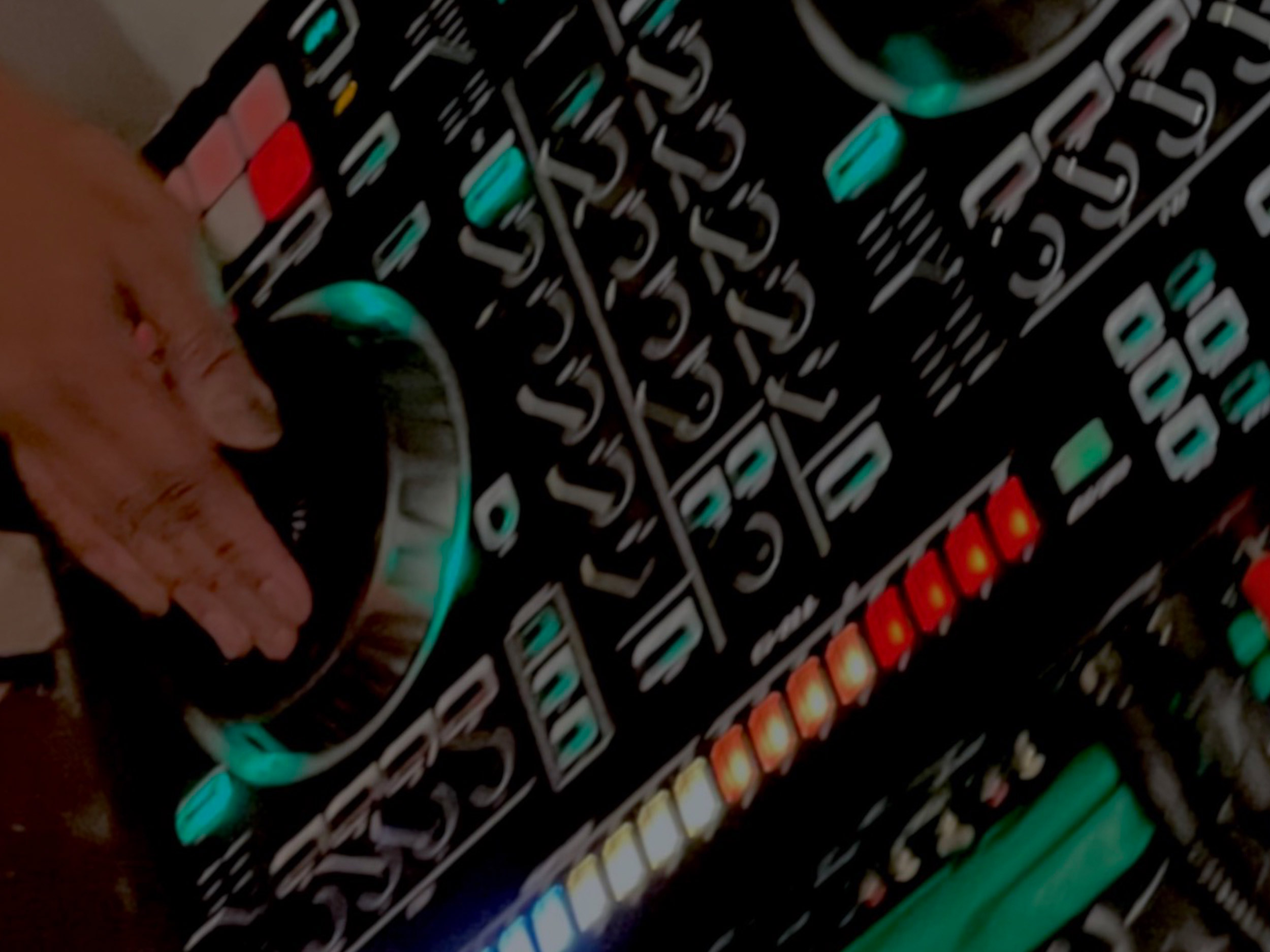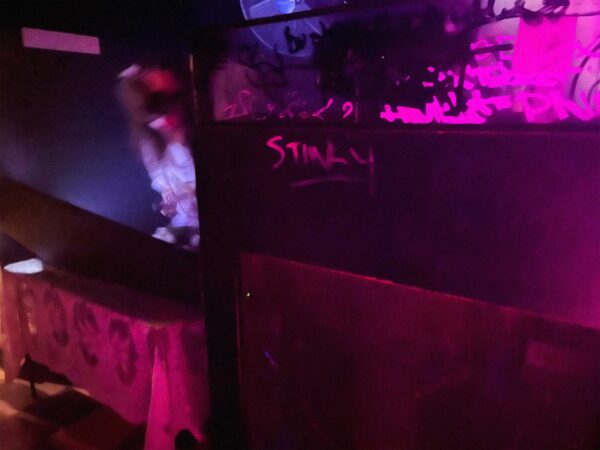In her biweekly column for Document, McKenzie Wark checks in with an intergenerational Downtown bohemia
I’m not one who goes in for dance-floor nostalgia. Give me the sounds of now. That means I usually end up dancing with far younger people, which can feel a little lonely at times. I wonder where my contemporaries are dancing. Well, I know part of the answer—they don’t. They moved away, had kids, started doing yoga routines on downloaded apps. Or they are dead.
My friend Matthew sent me a flyer for an event called “Recreating the Pyramid Club Playlist 1983-1987.” The DJ would be Phil Painson, a highly regarded sound engineer, and the host would be another Matthew—the jazz musician Matthew Shipp. I love his music, and thought I might at least get to meet him. It was at Village Works Bookstore in the East Village, which I’d been meaning to visit. So off I went on a rainy Monday night.
The Pyramid is one of those legendary New York clubs. Its high point was the ’80s, when it brought together punk, drag, performance art, and all sorts of unclassifiable creative energies—a bright spot in a desolate landscape, on the border of the East Village and Alphabet City. That was before my time. It was still going in the ’90s, when I started coming to New York from my home in Sydney. The Black Lips Performance Cult, from which sprang Antony and the Johnsons, now known as Anohni, performed there from 1992 to ’95.
I wish I could say I’d seen them, back in the day. I saw a recreation of one of their wild, anarchic shows at the Kitchen a few years ago, and videos of the originals more recently at Participant Inc. I did see some marvelous things at the Pyramid, even if I have few clear memories of who or what they were. The main thing I remember is Christen, the person who took me there. I was in love. My memory of the Pyramid is of her.
“The Pyramid is one of those legendary New York clubs. Its high point was the ’80s, when it brought together punk, drag, performance art, and all sorts of unclassifiable creative energies.”
When I got to Village Works, a small crowd jostled in the narrow spaces between the bookcases. They were full of cool shit, mostly about Downtown art, that I would have loved to pore over, were it not so jammed. Soon, we were led downstairs. Painson kicked the music off on his laptop. There’s something about those vintage ’80s synthesizer sounds. My body has them somewhere in muscle memory. I had to dance.
I’m self-conscious in a lot of situations, but not when I dance. Didn’t bother me that most people were standing around talking. Everyone seemed to know each other. Most about my age, with the air of being bohemian or bohemian adjacent. People not unlike Christen and me. My read is that these were people who’d dug themselves into the East Village early enough that they got to stay, and are still here.
I had the misfortune of emigrating to New York in the middle of a property boom. Christen and I lived in Williamsburg, but it was already at the tail end of its time as a boho enclave. The gentrification—of which we ourselves were in an early stage—would sweep on and sweep us away. We never got to live in the Village. We’re not too different from this crowd, though. There were several young adults around, who also all knew each other. Those delightful, arty, put-together, New York-raised zoomers, with their sheen of street awareness and inherent grasp of style. Rather like the kids Christen and I are raising in this city.
I was too shy to introduce myself to Matthew Shipp, so I just danced. Most of the tracks I knew, like “Wood Beez” by Scritti Politti. I interviewed them once, back in Sydney. Their record company didn’t know what to do with them. Three layers of handlers and managers were in the room with us during the interview, which, needless to say, lacked any intimacy or charm. That was the ’80s, when Marxist avant-punk bands would morph into high-sheen R&B acts without missing a beat. Back then, that was what places like the Pyramid were also about: Jail-breaking sonic and cultural material out of the locked grooves of genre, and pasting them back in shiny new ensembles.
“I wish we had more intergenerational social spaces. New York is a city of transplants, who have to figure it all out with their peers.”
Actually, I do remember that one thing I saw at the Pyramid in the ’90s was drag—although it was nothing like the drag I’d seen before. It was no longer drag as female impersonation—not even gender comedy. It was gender deconstruction. I was a repressed, closeted transsexual at the time, so this was liberating and terrifying all at the same time. If only I’d had more courage back then. It might have spurred me to come out, to transition. The thing I did have, and the reason I’m still here, is a powerful sense of self-preservation.
I felt a kind of kinship at a distance with the crowd in the basement of Village Works. I can imagine trajectories for their lives in the city. Not too different from my life, or what my life might have been if, through luck or skill, I’d found a rent-controlled apartment. Aging out of nightlife. Getting a handle on one’s habits. Doing day jobs that pay enough, but not that much, and that aren’t too demeaning. Locking into domestic stability. Having kids, raising them. Showing up to parent-teacher night in a leather jacket.
Somewhere, sometimes, the dance of life gets lost. One can lose the habit of how beats inhabit flesh. One sees one’s own kids close the door and step out into their own adventures. And worry about it, endlessly. The kids are alright. I look at the young people in the basement at Village Works. Two young Black women chatting by the water stand. Two young white men drawing on sketch pads in the corner. A lot of parents flee the city for the suburbs, but city-raised kids turn out just fine, and have the city in their gait, their gaze, from the start. Unlike transplants such as me, they don’t have to work to acquire it.
I wish we had more intergenerational social spaces. New York is a city of transplants, who have to figure it all out with their peers. Some don’t even try, and live like suburbanites. Gentrification pushes each new incoming flush to some different corner. What I glimpsed in the basement of Village Works is the thread of intergenerational, creative life in the city. And the intuition that it’s all, as Anthony Powell put it, “a dance to the music of time.”



















